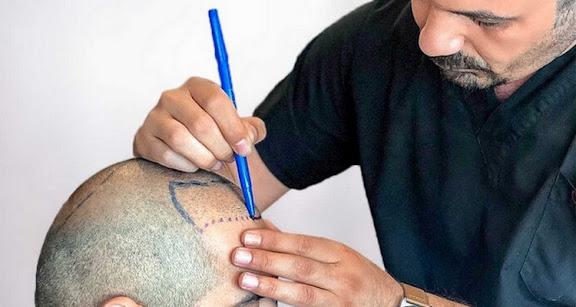Undergoing a Hair Transplant is a significant step toward restoring your natural hairline and confidence. However, the success of the procedure heavily depends on proper post-operative care. Knowing what to avoid after a Hair Transplant session is crucial to ensure optimal healing, graft survival, and long-lasting results. This guide covers the key mistakes to steer clear of to protect your newly transplanted hair and promote healthy growth. Hair Transplant in Dubai has become a sought-after solution for hair loss, but post-surgery care plays a pivotal role in achieving the best outcomes.
Avoid Touching or Scratching the Transplanted Area
One of the most critical rules after a Hair Transplant is to avoid touching, scratching, or picking at the grafts. The newly implanted follicles are delicate and need time to anchor securely. Any unnecessary contact can dislodge the grafts, leading to poor growth or patchy results.
Why Is This Important?
- Prevents graft displacement
- Reduces the risk of infection
- Ensures proper healing of the scalp
Steer Clear of Strenuous Activities and Exercise
Physical exertion increases blood pressure and sweating, which can negatively affect the healing process. Heavy workouts, lifting weights, or intense cardio should be avoided for at least 2-3 weeks post-surgery.
Recommended Alternatives:
- Light walking is acceptable
- Avoid bending over excessively
- Gradually resume exercise after doctor approval
Say No to Smoking and Alcohol Consumption
Smoking restricts blood flow to the scalp, impairing graft survival, while alcohol can cause dehydration and slow down recovery. Both habits should be avoided for at least two weeks after the procedure.
Negative Effects of Smoking & Alcohol:
- Delayed healing
- Poor blood circulation
- Increased risk of complications
Avoid Direct Sun Exposure and Heat
The scalp is highly sensitive after a Hair Transplant, and prolonged sun exposure can cause sunburn, swelling, or discoloration. Similarly, saunas, steam rooms, and hot showers should be avoided in the initial weeks.
Protective Measures:
- Wear a loose hat when outdoors
- Stay in shaded areas
- Use lukewarm water for hair washing
Skip Hair Styling Products and Chemicals
Hair gels, sprays, dyes, and other styling products contain harsh chemicals that can irritate the scalp and damage fragile grafts. Avoid using them for at least a month post-surgery.
Safe Alternatives:
- Use mild, sulfate-free shampoos
- Avoid blow-drying on high heat
- Let hair air-dry naturally
Don’t Swim or Submerge Your Head in Water
Chlorine in swimming pools and bacteria in seawater can infect the healing scalp. Avoid swimming, hot tubs, and long baths for at least two weeks after the procedure.
Potential Risks:
- Infection risk
- Graft weakening
- Slower recovery
Avoid Wearing Tight Hats or Headgear
Tight caps, helmets, or headbands can rub against the grafts, causing friction and dislodging them. If necessary, opt for loose-fitting, breathable headwear.
Best Practices:
- Wait at least a week before wearing hats
- Choose soft, non-abrasive fabrics
- Avoid excessive pressure on the scalp
Don’t Neglect Hydration and a Balanced Diet
Proper nutrition supports healing and hair growth. Dehydration and poor eating habits can delay recovery and weaken new hair follicles.
Essential Nutrients for Recovery:
- Protein (eggs, lean meat, beans)
- Vitamins (A, C, E)
- Iron and zinc-rich foods
Avoid Sleeping on Your Stomach or Side
Sleeping in the wrong position can cause friction and pressure on the grafts. For the first 7-10 nights, sleep on your back with your head slightly elevated.
Tips for Safe Sleeping:
- Use a travel pillow for neck support
- Avoid rubbing your scalp on the pillow
- Maintain a 45-degree angle to reduce swelling
Don’t Skip Follow-Up Appointments
Post-operative check-ups allow the surgeon to monitor healing and address any concerns. Missing these appointments can lead to undetected issues.
Why Follow-Ups Matter?
- Ensures grafts are settling well
- Early detection of complications
- Personalized aftercare advice
Final Thoughts
Following these precautions after a Hair Transplant is essential for achieving thick, natural-looking hair. Every step, from avoiding physical strain to maintaining a healthy lifestyle, contributes to the success of your procedure. For those considering Hair Transplant, choosing a skilled surgeon and adhering to post-care instructions will maximize your results. By avoiding these common mistakes, you can enjoy a fuller head of hair with minimal complications.






Comments